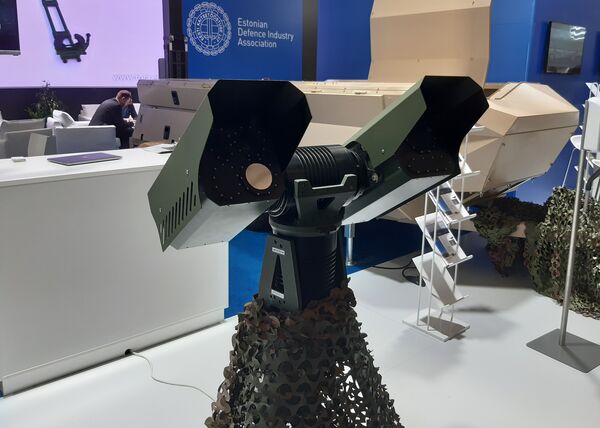
Marduk's Shark gimbal fitted with a range of cameras for surveillance and tracking. (Janes/Huw Williams)
Marduk will focus development efforts on the gimbal and target detection and tracking capabilities of its Shark counter-unmanned aerial vehicle (C-UAV) system, company representatives told Janes .
Speaking at Eurosatory 2022 in Paris, Leet Rauno Lember, Marduk's chief operating officer, said that the company has recognised that the Shark system's gimbal provides a precise and fast target tracking capability, and that they will focus on developing the unit – with the potential to scale the system. They will also work to enhance its target acquisition, recognition, and tracking capabilities, which had proven to be effective in trials and on deployment, he added.
The current configuration features the Shark gimbal equipped with mid- and long-range electro-optical cameras, an infrared camera, and a laser rangefinder.
According to Lember, the system has demonstrated the ability to detect a DJI Mavic air vehicle at 2.7 km, and to track the same target at 4.5 km.
Lember said that Marduk has developed its software to filter the air picture, removing clutter that might otherwise provide a false track, such as birds.
Marduk's initial concept was for the Shark system to feature laser effectors – initially up to 10 kW – to temporarily or permanently ‘blind' the optronics payload of a UAV. While this is being pursued, the company is also exploring other effectors and integration with offboard sensors, Lember said, noting a collaboration with Netherlands-based Robin Radar Systems.
The Shark system has been deployed with the Estonian military in Poland, tested at Ämari Airbase in Estonia, and delivered to an undisclosed customer in the Middle East, Lember said.
Looking to read the full article?
Gain unlimited access to Janes news and more...







